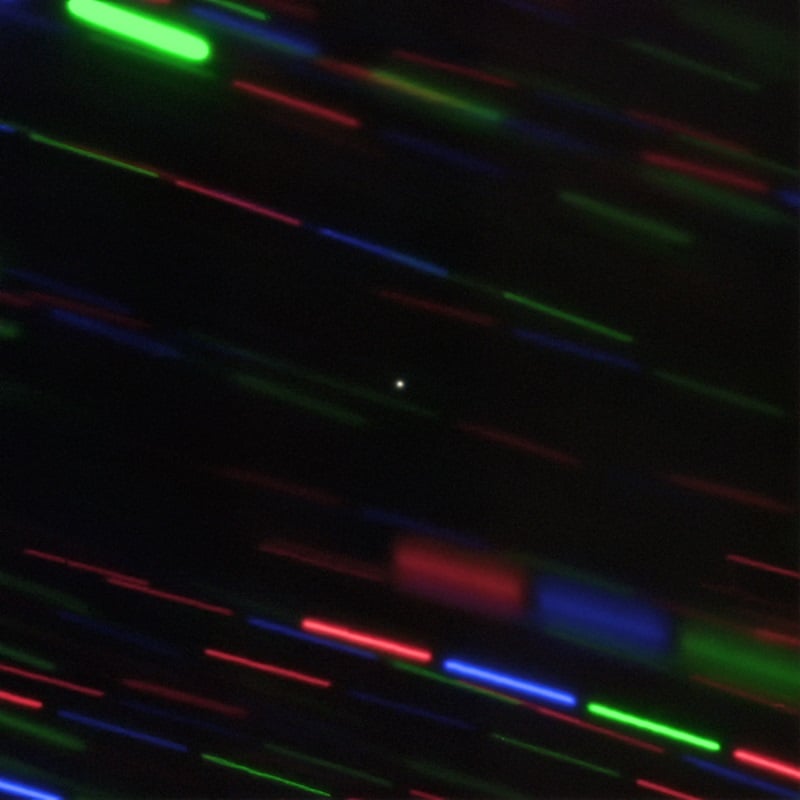With the excitement and interest in the newly discovered ‘mini-moon ' found orbiting Earth, astronomers quickly set their sights on trying to get more details, to determine what this object actually is.
Using the Gemini Observatory in Hawaii, a group of astronomers captured a clearer view of this so-called Temporarily Captured Object (TCO), named 2020 CD3. The image, above, was obtained on February 24, 2020. It shows a tiny pinpoint of light against trailing stars.
"The stars are trailing because this object is moving relative to the background stars and the 8-meter Gemini North telescope was tracking on this object," said Grigori Fedorets, who led the Gemini observations. He said it is challenging to follow moving objects like this with a big telescope like Gemini.
While its makeup is not yet known, 2020 CD3 is about the size of a car (Elon Musk says its not his) and orbits around Earth every 47 days. It was discovered on February 14, 2020 by astronomers at the Catalina Sky Survey in Tucson, Arizona.
Fedorets said the object could be a rare natural rocky object, or it could be something humans put into space decades ago — a spent rocket stage, for example.
"Either way this is a very compelling object and needs more data to determine what it is," he said, adding that more observations are needed to tell the full story of this mystery objects.
From determining its orbit, astronomers say it is quite likely 2020 CD3 has been orbiting earth for about three years, but it will probably be ejected from the Earth-Moon system in April of this year.
2020 CD3 seems to be quite similar to Earth's only other known mini- and temporary moon, a small asteroid discovered in 2006 named 2005 RH120, which has since been ejected out of Earth orbit.
The Minor Planet Center says that no link to a known artificial object has been found.
Astronomer Kacper Wierzchos, who was part of the team that discovered 2020 CD3, has been tweeting about the discovery, and said, "it's a "big deal as out of ~ 1 million known asteroids, this is just the second asteroid known to orbit Earth."
Fedorets, an astronomer at Queen's University Belfast, and his team are "pulling out all of the stops" to obtain more data on the object to determine its nature. "Additional observations to refine its position will help us determine this mystery object's orbit and its possible origin," said Fedorets, adding that its reflectivity is also an important characteristic, as rocky bodies tend to have relatively low reflectivity compared to human-made space debris.
There are likely other similar objects out there, waiting to be found. Fedorets also said that once the upcoming Vera C. Rubin Observatory is up and running and conducting a continuous deep survey of the sky "we expect to find a population of these objects once the Rubin Observatory is operational," said Fedorets. "Stay tuned!"
Lead image caption: Gemini Observatory image of 2020 CD3 (center, point source) obtained with the 8-meter Gemini North telescope on Hawaii's Maunakea on February 24, 2020. Credit: The international Gemini Observatory/NSF's National Optical-Infrared Astronomy Research Laboratory/AURA.
 Universe Today
Universe Today
